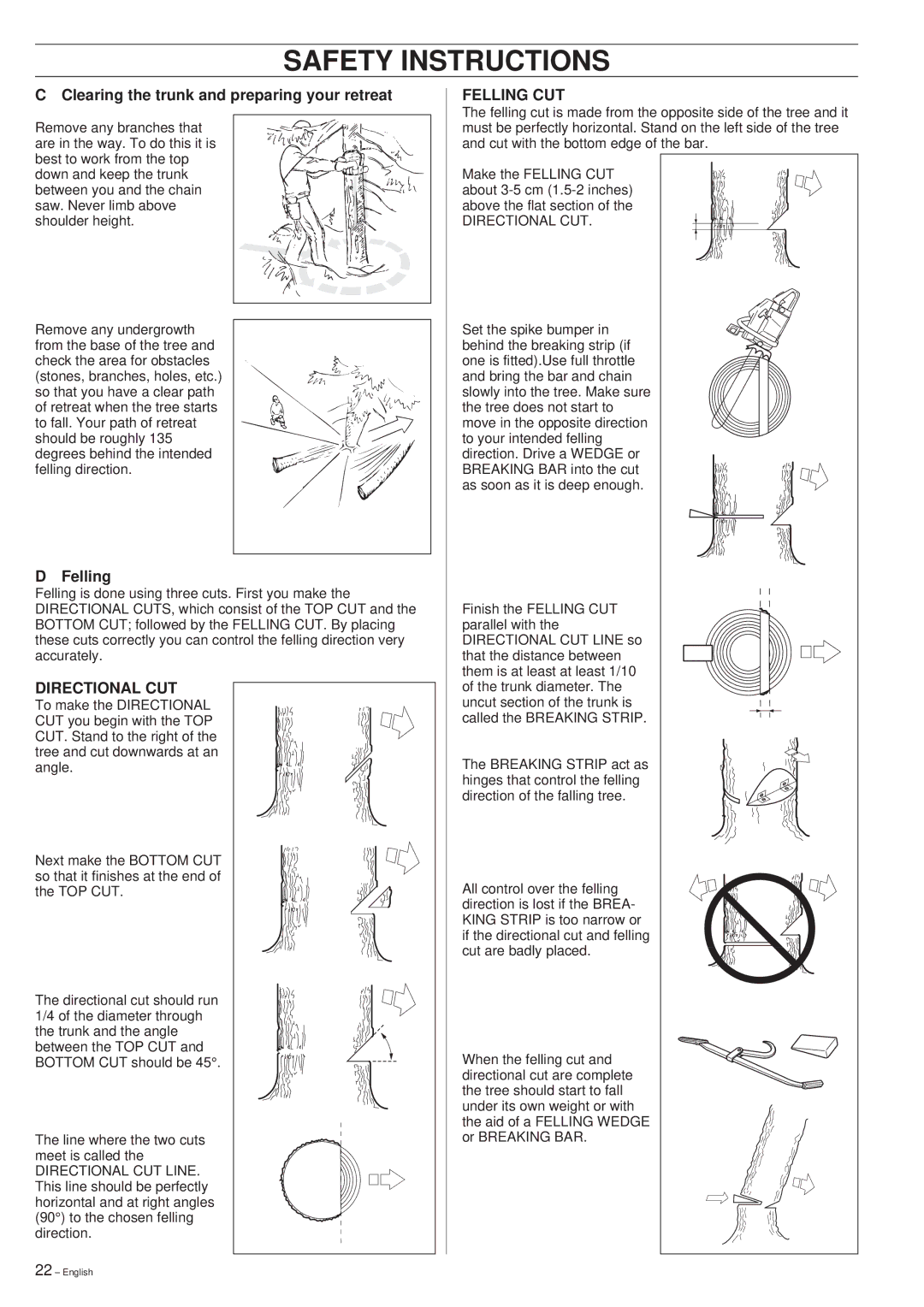630, 670, 625 specifications
The Jonsered 625, 670, and 630 chainsaws represent a robust line of products designed specifically for both professional and amateur users who require reliability, power, and efficiency in their cutting tasks. These models are a testament to Jonsered's commitment to innovation and performance in the forestry and outdoor equipment sector.The Jonsered 625 features a compact design, making it ideal for users who need a lightweight tool for trimming, pruning, or cutting smaller trees. This model is equipped with a powerful engine that delivers an impressive power-to-weight ratio, enabling users to handle tough jobs without feeling fatigued. One of the standout features of the 625 is its ergonomic design, including a comfortable handle and optimized balance, which significantly reduces operator strain during extended use.
Meanwhile, the Jonsered 670 is tailored for those who need a bit more power and capacity. It is versatile enough to handle medium-sized cutting tasks as well as heavy-duty use. This model is designed with advanced vibration dampening technology, minimizing vibrations transferred to the user's hands, thus enhancing comfort and precision. The 670 also incorporates the Easy Start system, which makes starting the saw simple, even after long periods of inactivity.
The Jonsered 630 stands at the higher end of this trio, aimed at professional users who demand peak performance. With an increased engine size and enhanced cutting speed, the 630 can tackle larger trees and tougher materials with ease. This model features a high-performance air filtration system that ensures the engine remains clean and runs efficiently. Additionally, the 630 incorporates a centrifugal air cleaning system that prolongs service intervals and reduces maintenance needs.
All three models come equipped with cutting-edge technologies such as the X-Torq engine, which lowers fuel consumption and exhaust emissions, making them environmentally friendly options in today's market. These chainsaws incorporate safety features like chain brakes and low kickback chains, ensuring user safety during operation.
In summary, the Jonsered 625, 670, and 630 chainsaws each offer distinct advantages catering to various user needs, from homeowners tackling light-duty tasks to professionals requiring robust, high-performance machinery. The blend of technology, ergonomic design, and safety ensures that Jonsered continues to be a trusted name in outdoor power equipment. These chainsaws not only deliver superior cutting performance but also provide a seamless user experience.

